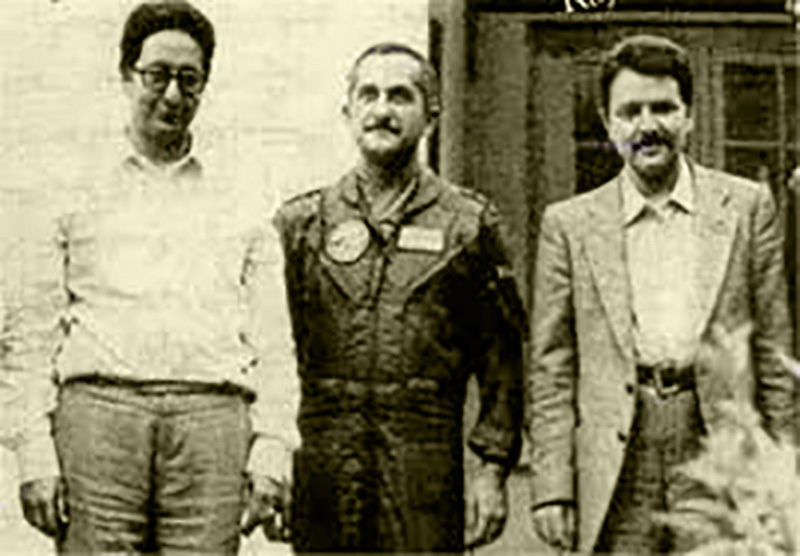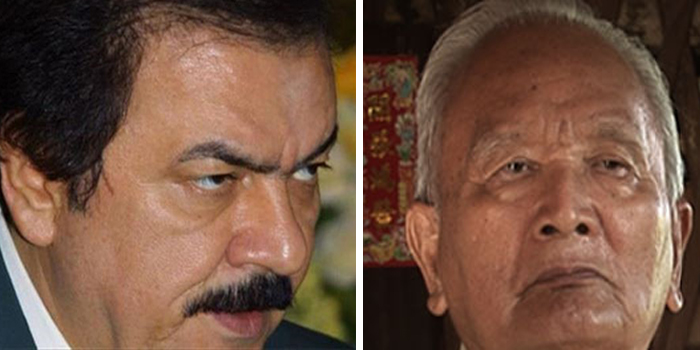The removal of BaniSadr was the beginning of his secret life. Rajavi later said that the cult had hidden BaniSadr in a house in central Tehran after he was ousted from the presidency. The Mojahedin-e-Khalq (MEK) then offered him to leave Iran with their help, and he accepted. The MEK used their infiltrating elements to prepare the situation for escape. They left Iran forever on Tuesday, July 28, 1981, on a Boeing 707 aircraft, piloted by Colonel Moezi, the Shah’s special pilot.

Massoud Rajavi Escapes to Paris, Flees Tehran
With the shah’s regime in shamble following the victory of the 1979 Revolution Massoud Rajavi finds himself sidelined from power – an undesirable in Iran’s new political landscape.
Robbed of what he felt was his due, Rajavi will rebel against the authority of Ayatollah Ruhollah Khomeini, and ultimately that of the people, by plotting terror acts against his own fellow nationals.
Hunted by the newly established for committing heinous acts of treason against innocent civilians and state officials, Rajavi fled Tehran for Paris where he planned to ask for political asylum.
Ali Akbar Rastgoo, himself a member of the MEK / MKO recalled the events as follow: “After the group failed to topple the new government (1981) Rajavi escaped to France. If in fact he felt that power had been usurped from the people he should have stood his ground and resist … as he claimed he would. But he chose to run away, he chose to abandon his men not to have to stand trial. Interestingly enough he omitted to save the two people who could have clouded his authority and thus prevent him to proclaim himself commander in chief of the movement: Musa Khayabani and his wife, Ashraf Rabiee. Rajavi already had his eyes set on Abolhassan Banisadr’s daughter, whom he quickly married following his arrival in France to consolidate his position vis a vis the French authorities.”
Before betraying his countrymen Abolhassan Banisadr was a fervent revolutionary and first elected president of Iran’s Islamic Republic. Following the Iranian Revolution, Banisadr became deputy minister of finance on 4 February 1979 and was in office until 27 February 1979. He also became a member of the revolutionary council when Bazargan and others left the council to form the interim government. After the resignation of the interim finance minister Ali Ardalan on 27 February 1979, he was appointed finance minister by then prime minister Mehdi Bazargan. On 12 November 1979, Banisadr was appointed foreign minister to replace Ebrahim Yazdi in the government that was led by Council of the Islamic Revolution when the interim government resigned.
Banisadr was elected to a four-year term as president on 25 January 1980, receiving 78.9 percent of the vote in the election, and was inaugurated on 4 February. Khomeini remained the Supreme Leader of Iran with the constitutional authority to dismiss the president. The inaugural ceremonies were held at the hospital where Khomeini was recovering from a heart ailment.
The Majlis (Iran’s Parliament) impeached Banisadr in his absence on 21 June 1981, in charges of treason.
Rajavi’s marital ambitions were purely self-serving. By allying himself to Banisadr he hoped to seal the latter’s support and benefit from his influence among France’s political elite. A few years later he would divorce Banisadr’s daughter and marry the infamous Maryam Rajavi.
In France, Massoud Rajavi and Banisadr form on 20 July 1981 the National Council of Resistance.13
Banisadr and Rajavi’s relationships would come to a brutal halt when the latter’s collaboration with Saddam Hussein against his countrymen became too much for Banisadr to stomach.
Rajavi and Banisadr’s escape from Tehran was made possible with the help of one of the shah’s former pilot: Colonel Moezi, the very man who facilitated the shah’s escape from Iran on the eve of the Revolution.
Terror spring



